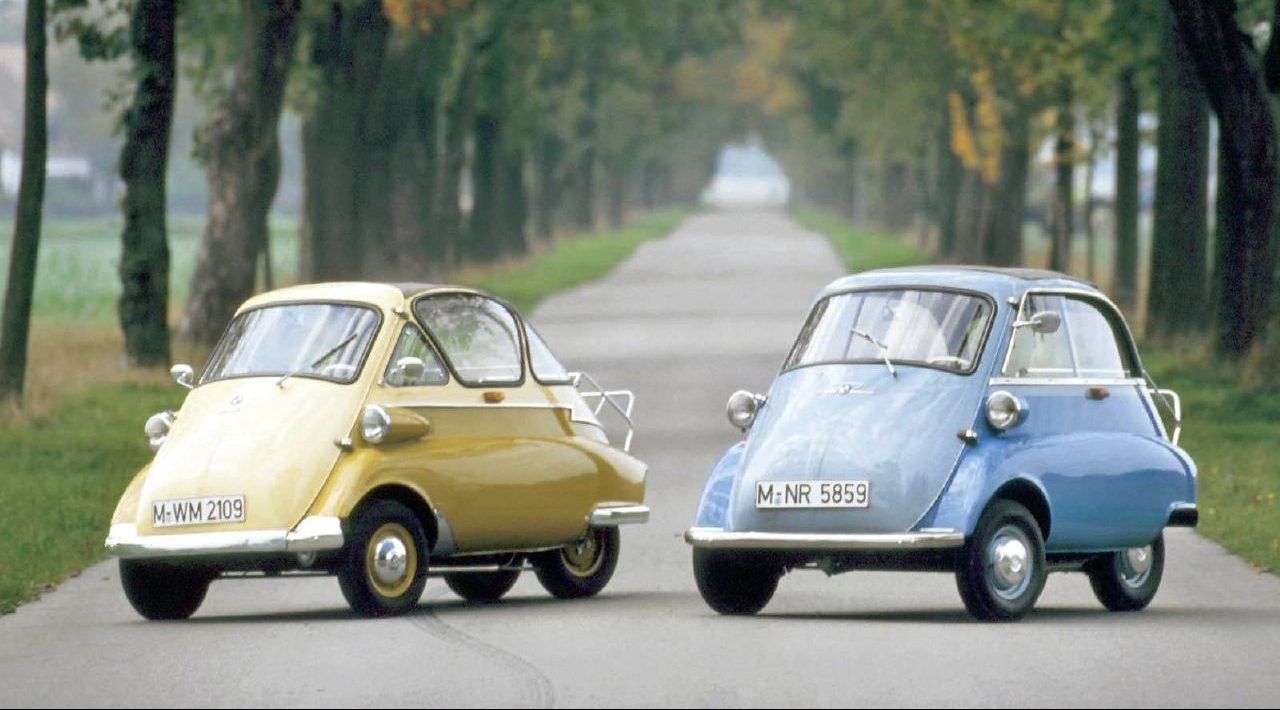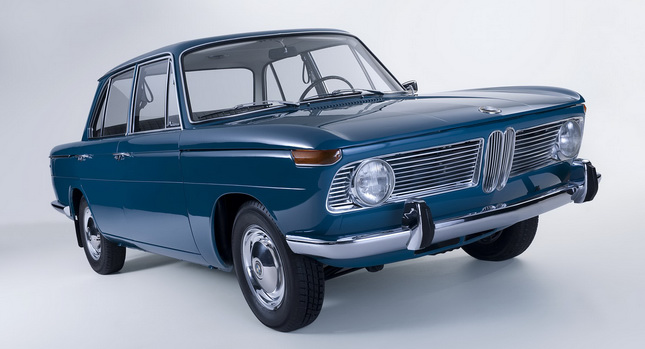The date is December 1959.
A shareholder's meeting has been called to vote on a single resolution - to sell BMW to Daimler-Benz.
The banks will not advance BMW any more money even though their latest model, the 700, has 25,000 advance orders which can not be built because of cash flow problems.
BMW are still making money from motorcycles. When BMW was finally allowed to make cars again after WW2 the car factory was now in East Germany and most of the designs and staff lost. The big saloons (the 50x range or Baroque Angels as they are often called, the standout being the 507 - a car everyone wanted but hardly anyone could afford even when sold at a loss) aimed at the Mercedes products were (mostly) desirable but hopelessly over priced and slow selling. Which is just as well as they all lose money.
The interim halfway house between a motorcycle and a car, the Isetta "bubble car", which BMW bought from Iso in Italy using a 250 cc and then 300 cc motorcycle engine, had kept the company going through 1955 and 1956, but sales were dropping off as the economy improved.
A larger version, but still the same basic shape with the quirky door across the front, but holding 4 proper seats, more properly a 4 wheel car, and with a 600 cc engine (the BMW 600) had not captured the imagination and sold slowly.
BMW's Austrian importer had taken the 600 to the Micholetti styling studio in Italy who produced an attractive 2 door sporty coupe design. BMW's in house team created a 2 door saloon from this and launched them at the August 1959 German Motor Show to great success.
But it was too little and too late. The banks had heard all this before and were no longer prepared to take the risk.
The shareholder's resolution to sell BMW at half book price to Daimler-Benz (who only wanted the real estate) was not voted on thanks to delaying tactics and the meeting adjourned.
Industrialist Herbert Quandt, whose family company owned Varta Batteries amongst many other ventures, had shares in BMW and attended the meeting.
He was intrigued by the passion shown for the brand and the prospects for the 700.
He took a 700 to Daimler-Benz who considered it a viable product.
So the Quandt family purchased over 50% of BMW shares, bankrolled the profitable production of the 700 and set about designing a new class "Neue Klasse" of mid size 4 door (aided by technical staff from the collapsing Borgward concern who knew about making profitable cars in medium volume)
Quandt dictated that the core BMW values created by the original BMW mastermind, Franz Joseph Popp in 1917, which we now know as "sheer driving pleasure", form the basis for all design decisions.
The Neue Klasse 1500 was a sporty, slightly luxurious junior executive 4 door 4 seat car which was rapturously received by the press and the public.
Larger engined versions, the 1600, 1800 and 2000 followed.
A larger 4 door sedan was created from this, the E3 2500, 2800, and 3.0 (3 litre), from which came the 2 door coupe E9, best known as the 3.0 CSL batmobile, and a smaller 2 door version initially called the 1600-02 but quickly renamed the 1602, best known for the 2 litre 2002 version.
All these were great sellers and profitable.
From that base BMW developed the 3, 5, 6 and 7 series which we know today.
Thanks to the 700 for saving BMW from, at best, becoming a motorcycle division of Mercedes.
The 700 was in production from 1959 to 1965 although most were made in 1960 and 1961. Over 188,000 were made.
I have had the rare privalige to go through the export records at BMW Classic and can conform that no 700s were supplied to Australia as new from the factory. Only 2 sedans are known to have ever been imported to Australia.
And I have the only long wheelbase example! Although I consider it a resource for the BMW Drivers Club Melbourne.
There are three Coupes known to be in Australia. A red Coupe Sport in Melbourne which is not on the road at the time of writing and in need of much restoration, a Coupe built in 1959 with a very low chassis number in road going condition in Jindabyne and a third rusted out and parted for spares in Adelaide. Alongside the Adelaide car was a standard wheelbase 700 sedan built as LHD, badly converted to RHD and then imported into Australia, and thus not eligible for LHD registration in SA, and then converted back to factory spec LHD. This is now in Sydney and, thanks to more sane registration requirements, road registered.
This leaves us with 3 road registerted 700s, a coupe, a standard whelbase sedan and long wheelbase sedan.




